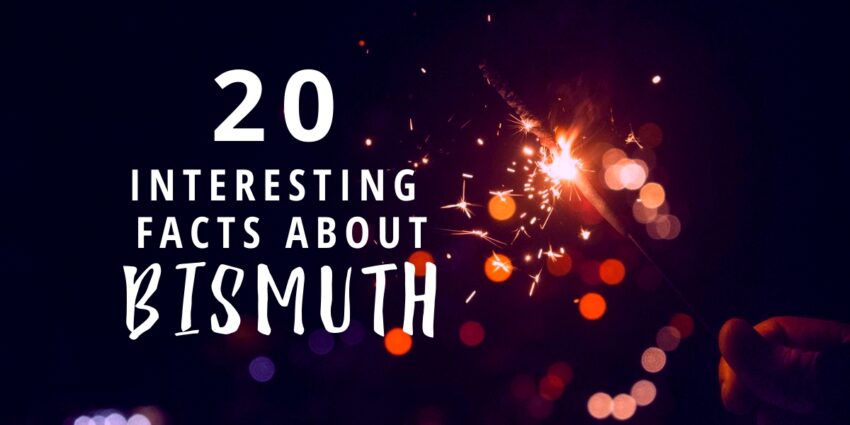Bismuth is a brittle, crystalline, post-transition metal with unusually low levels of electrical and thermal conductivity. Bismuth also has a particularly low melting point, which enables it to form alloys important for many essential applications.
In 2018, about two-thirds of U.S. bismuth consumption was for chemicals used in cosmetic, industrial, laboratory, and pharmaceutical applications. Bismuth compounds are used in the manufacturing process of synthetic fiber, ceramic glazes, crystal ware, pigments, rubber, fire detectors and extinguishers, nuclear reactors, and to make transuranium elements using cold fusion. Bismuth is an environmentally friendly substitute for lead in plumbing and many other applications, including fishing weights, hunting ammunition, lubricating greases, and soldering alloys.
It is very possible that political, economic, and global population pressures may limit the ability of some countries to secure bismuth resources in the future, causing many nations around the world to currently consider bismuth a Critical Resource Mineral (CRM).
Beyond the basics above, what else should we know about bismuth? Check out the 20 interesting facts below!
- In ancient Egypt, a bismuth compound named bismoclite was used for cosmetic purposes.
- In 1450, German monk Basil Valentine first made reference to “wismut”, which would later be Latinized as “bisemutum”.
- Extraction of bismuth for use in pigments began as early as the 15th century from silver mines in Schönberg, Germany.
- Around 1500, the element name “bismuth” was already present in some scientific treatises. The Swiss scientist Theophrastus Bombastus von Hohenheim (1493 – 1541), probably better known under his latinized name of Paracelsus, mentioned the word “Bisemutum”. He said that the latin word came from a german term “wissmut”. The word “wissmut” was used because in Saxony, around St. Georges, the mineral was “extracted” (gemutet), “in the fields” (in den Wiesen). For other researchers, the word comes from another similar german word, “weissmuth”, which means “white material”, and this is supported by the fact that bismuth is a bright metal of white colour.
- Bismuth was often confused with lead and tin in earlier eras. In 1595, Andreas Libavius confused bismuth with antimony, and in 1675 Nicolas Lemery confused bismuth with zinc.
- The French chemist Claude Francois Geoffroy showed in 1753 that bismuth was not a variety of lead or tin, but a separate element. This research was published in the Memoires de l’Academie Francaise.
- 1774: Torbern Olof Bergman reinvestigated bismuth’s properties; his account, which was published in his Opuscula Physica et Chemica, contains the first fairly accurate description of bismuth.
- The industrial production of bismuth began in Saxony around 1830.
- A major stimulus to the bismuth industry came in the mid-1990s with the Safe Drinking Water Act Amendment (1995), which prohibited the presence of lead in drinking water fixtures in the U.S.
- Since 1997, the United States has been completely dependent on imports for its supply of primary bismuth. Currently, the U.S. imports about 80% of its bismuth from China.
- Until recently, bismuth was considered the heaviest element that still had a stable nucleus. However, in 2003, researchers at the Institut d’Astrophysique Spatiale in Orsay, France, found that bismuth does decay into thallium, although it has an extremely long half-life at about 20 billion billion years. Lead is now the heaviest stable element, according to Science magazine.
- The largest bismuth producing countries are China, Peru, Mexico (crude and refined) and Belgium (refined). In 2013, the US Geological Survey estimated global world refined bismuth production to be about 17,000 metric tons. Of this, Chinese production accounted for approximately 90 percent. With more than 70 bismuth mines, China also accounts for the vast majority of global bismuth reserves.
- In May 2018, the U.S. Department of the Interior, in coordination with other executive branch agencies, published a list of 35 critical minerals (83 FR 23295), including bismuth. This list was developed to serve as an initial focus, pursuant to Executive Order 13817, ‘‘A Federal Strategy to Ensure Secure and Reliable Supplies of Critical Minerals” (82 FR 60835).
- When liquid bismuth freezes, it expands rather than contracts because it forms a crystalline structure similar to water. Four other metals expand when they freeze: silicon, gallium, antimony and germanium.
- Of all metal elements, bismuth has the highest electrical resistance, the lowest thermo-conductivity (except mercury), and the highest Hall Effect (increase in electrical resistance when placed in a magnetic field). No other element has a higher level of diamagnetism than Bismuth. Diamagnetism is the ability for an object to create its own magnetic field opposing the magnetic field of another source.
- Bismuth ranks 65th in elemental abundance in the Earth’s crust, at an estimated 85 parts per billion by weight, constituting much less than 0.001% of the total. Bismuth abundance in our solar system is 10 parts per billion by weight.
- There is only one naturally occuring isotope of bismuth, bismuth-209. There are various numbers of radioactive isotopes, but none of them are used in any commercial applications.
- Bismuth is typically obtained as a by-product in refining lead, copper, tin, silver, and gold ores.
- Bismuth Trioxide is a key ingredient a popular firework effect known as the “Dragon’s Egg” and is also used in firework “sparklers.”
- Bismuth subsalicylate (C7H5BiO4), sold under the brand names Pepto-Bismol and Kaopectate, is a well-known remedy for stomach aches and diarrhea. It works by decreasing the flow of fluids and electrolytes into the bowel, reduces inflammation within the intestine, and may kill the organisms that can cause diarrhea.
